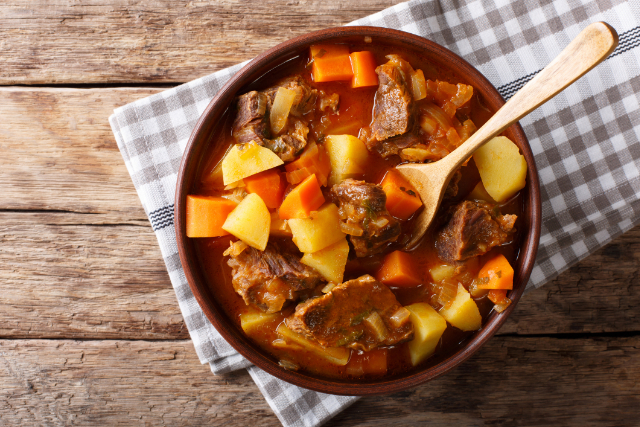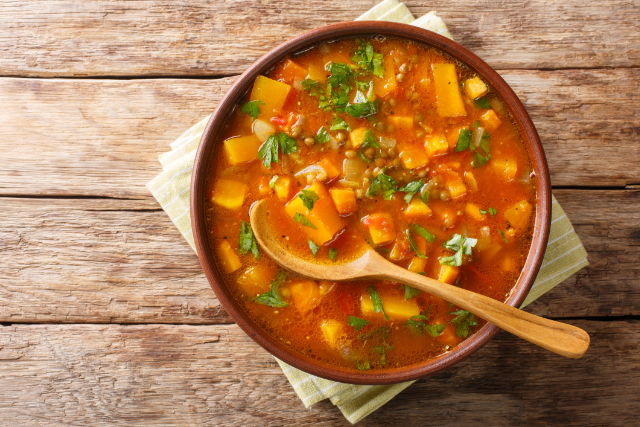Stewing and Stirring: What Gives?

One of the delightful aspects of stewing food is that the process is long, slow, and relatively hassle-free. Many stewing recipes are of the “set it and forget it” variety. This makes them especially alluring during the fall season when cool outdoor temperatures make us long to keep our homes warm, cozy, and full of fragrant smells all day long.
What better method than allowing dinner to slowly stew in the kitchen throughout the day?
If you're going to stew food, however, you must first consider how this method of cooking differs from others.
One key difference is how we approach stirring.
Frequency
When a recipe says, “stir occasionally” or “stir frequently” what does that even mean? The more you know about stirring and understanding what you're stirring, the better off you'll be. (Reluctant Gourmet)
Some people have formed the unfortunate habit of stirring whatever they're cooking every time they check on it. This proves especially disastrous when stewing food.
The best advice regarding how often you should stir is always to follow the directions in the recipe. Generally, when stewing food, you should stir as you add new ingredients, but that's about it.
Force
Another aspect of stirring to consider when stirring food is how much force you should use. Since stewed foods will cook for a long time and become soft, vigorous stirring could damage the integrity of their shape or cause them to become stringy or mushy.
Again, though specific recipes may vary slightly, most call for gentle, rhythmic motions.
We Can Help
Here at Thermodyne Foodservice Products, Inc., we provide quality food warmers for commercial, industrial, and institutional kitchens. If you have further questions or comments about the proper methods of stewing foods, or if you would like to hear more about our premium product lines, please feel free to contact us at any time.
We look forward to serving you.

Posted in: Cooking Tips & Recipes